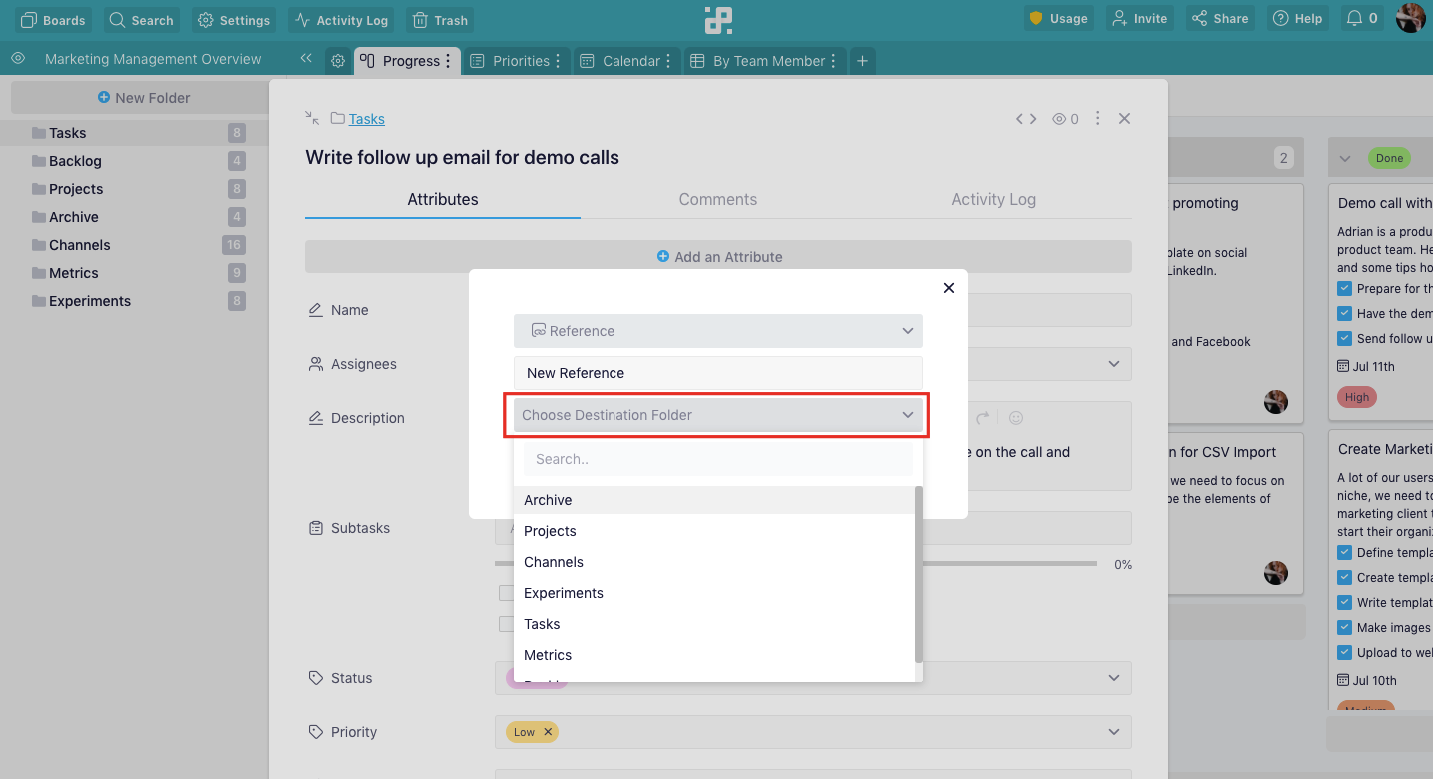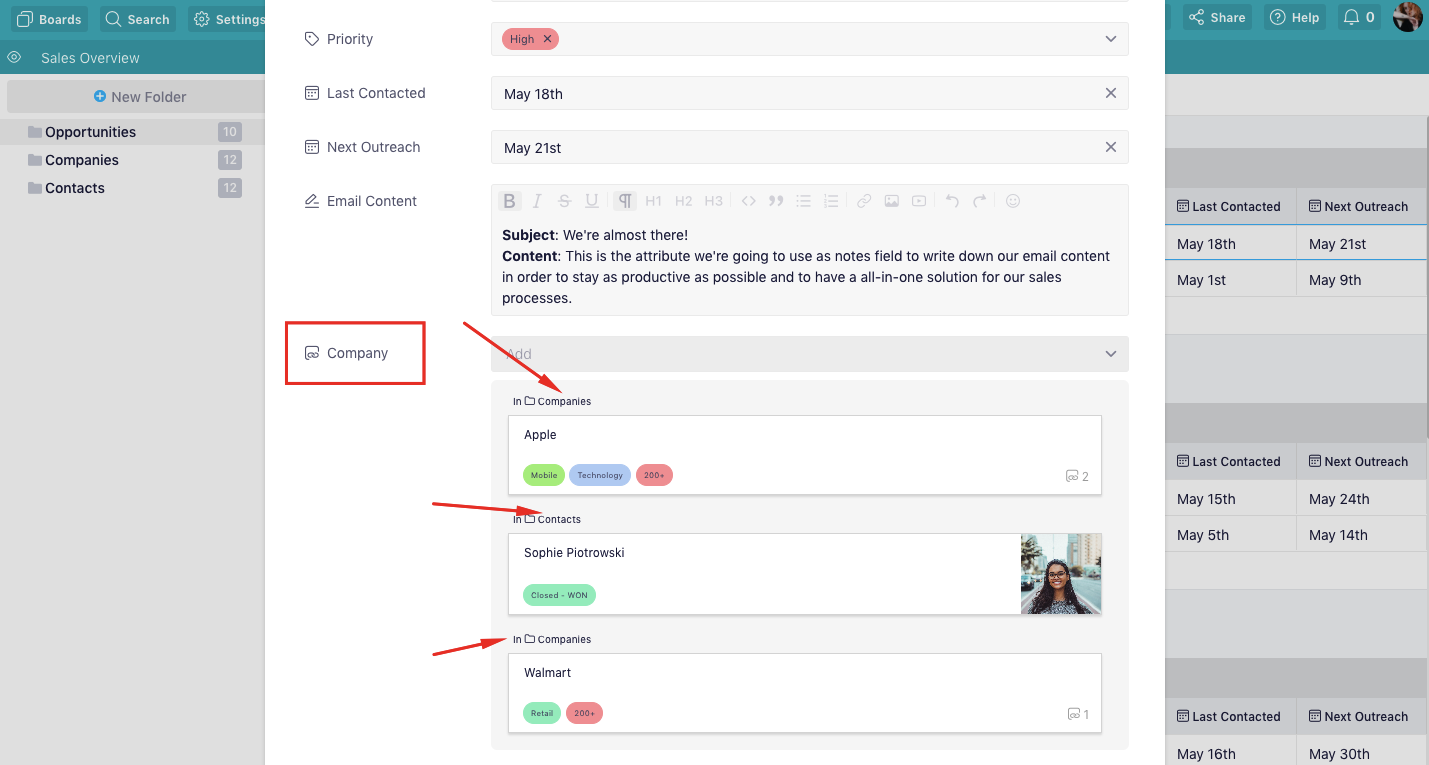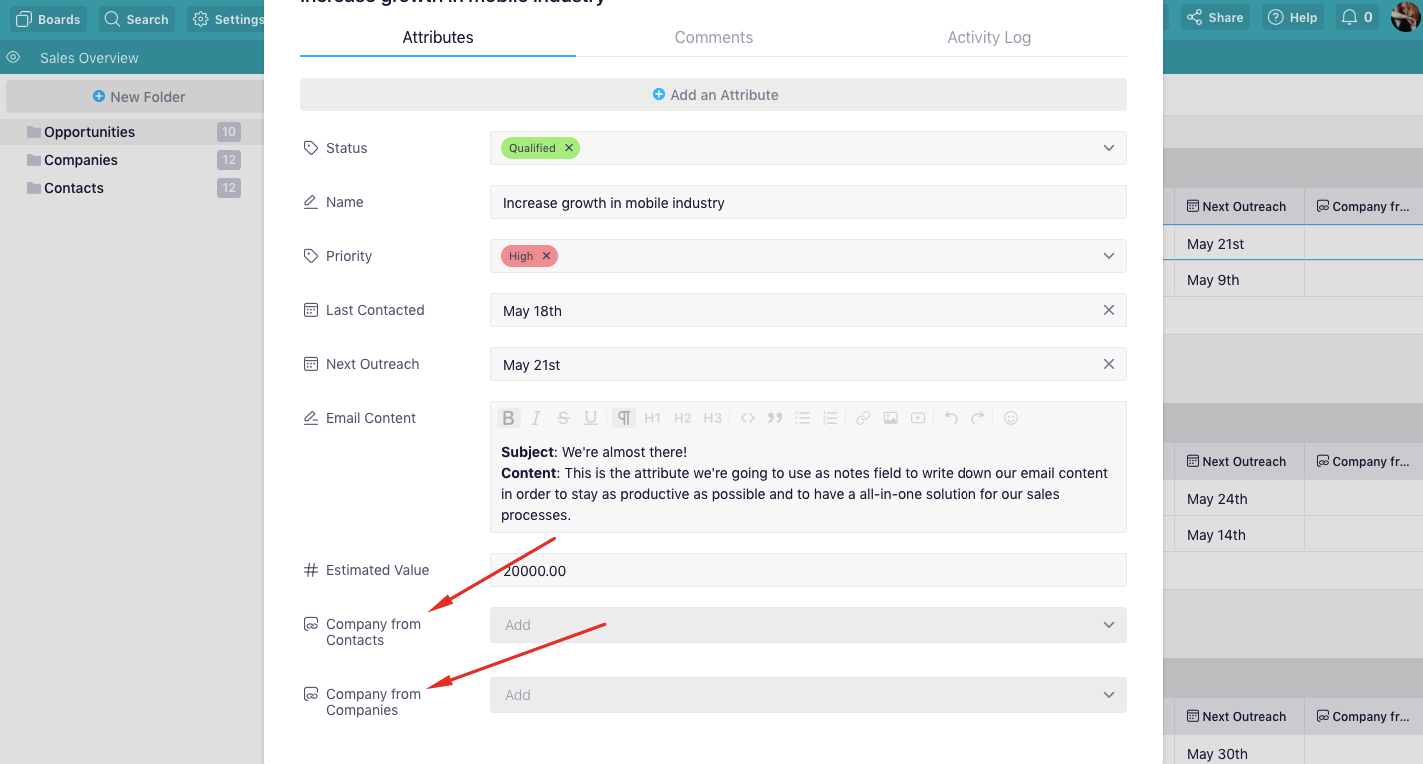-
Getting Started
-
Collaboration
-
Automations
-
Integrations
-
Import & Export
-
Privacy and Security
-
Affiliate Program
-
Announcements
We've Migrated to Reference v2
October, 2020
Good news for all Reference lovers: we've released an improved version of the attribute, with a couple of changes.
How Does It Work Now?
When creating a Reference attribute in one of your items, you now have to pick a destination folder along with the reference name.

This means that when you're adding items to your Reference field, you'll only be able to select items from the folder you chose.
Head over to our Reference section for more information on how to use this attribute.
How Will This Update Affect My Data?
{primary} NOTE: This update will only affect users who had Reference attributes that linked items from multiple folders. In case you never had such attributes, nothing will change for you.
First things first: nothing will happen to your data in this migration. You'll still have all of your Reference attributes in place, just formatted a bit differently—so to speak.
Let's explain this in a bit more detail.
Let's say that you created a Reference attribute (e.g. Company) that encompassed items from a couple of folders (e.g. Companies and Contacts).

In the migration, your old Reference attribute will be split into a couple of (new) Reference attributes. In short: you will have an additional Reference field for every folder you referenced items from.
The newly created Reference attributes will have the folder name (e.g. Contacts) added to the original Reference attribute name (Company).
So, what you will ultimately end with is this:
- Company from Contacts
- Company from Companies

You'll find the new references in the same items where you created the old attribute, with the same view settings and anything else related to the old attribute. You'll be able to easily edit the new Reference names afterwards.